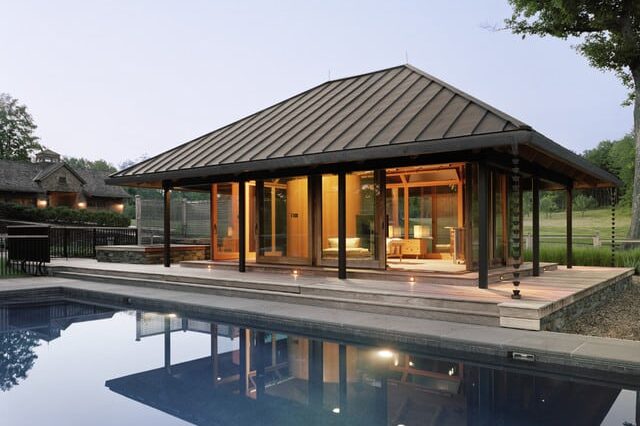In the diverse world of architectural design, bonnet roofs stand out as a classic and distinctive choice, combining timeless elegance with practical functionality. Characterized by their unique double-sloped structure, reminiscent of a bonnet or hood, these roofs have a rich history and continue to embrace for their aesthetic appeal and weather-resistant features. In this article, we’ll delve into the defining characteristics, benefits, and design considerations associated with bonnet roofs.
Defining Characteristics of Bonnet Roofs:
- Double-Sloped Design: The defining feature of a bonnet roof is its double-sloped design. The upper slope is steeper, resembling the crown of a hat, while the lower slope extends at a gentler angle, resembling the brim. This dual-sloped configuration creates a distinctive profile that adds a touch of sophistication to various architectural styles.
- Overhanging Eaves: Bonnet roof are known for their generously overhanging eaves on all sides. The significant overhangs serve both aesthetic and practical purposes. They enhance the visual appeal of the roof, providing shade to windows and walls below, and offering protection against the elements. Including rain and intense sunlight.
- Weather Resistance: The overhanging eaves contribute to the weather-resistant nature of bonnet roofs. By preventing direct exposure to rain and sun, these roofs help protect the underlying structure from water damage, UV radiation, and temperature extremes. This makes bonnet roofs a practical choice for regions with varying weather conditions.
Benefits of Bonnet Roofs:
- Architectural Elegance: One of the primary reasons for the enduring popularity of bonnet roofs is their architectural elegance. The unique silhouette adds a touch of charm and character to a variety of architectural styles, from Victorian and Colonial to French Country and Cottage. The graceful lines and proportions of bonnet roofs make them a standout feature. That enhances the overall visual appeal of a structure.
- Shade and Ventilation: The overhanging eaves of bonnet roofs provide effective shading for the exterior walls and windows, helping to regulate indoor temperatures. This shading effect contributes to energy efficiency by reducing the reliance on air conditioning during hot weather. Additionally, the overhangs promote natural ventilation, allowing fresh air to circulate around the structure.
- Historical Significance: Bonnet roofs have a historical significance, having been utilized in various architectural periods. Their association with classic styles and historical charm makes them a desirable choice for homeowners seeking to evoke a sense of tradition and timelessness in their homes.
- Versatility in Design: Bonnet roofs are often associated with traditional and classic architecture. They can adapted to suit modern designs as well. Architects and homeowners can explore variations in materials, colors, and detailing to create a bonnet roof. That complements a range of architectural aesthetics, from traditional to contemporary.
Design Considerations for Bonnet Roofs:
- Roof Pitch and Proportions: The proportions of the upper and lower slopes of a bonnet roof are critical to achieving the desired aesthetic. Careful consideration should be given to the pitch of each slope to ensure a balanced and harmonious look. The proportions can adjusted based on the architectural style and the scale of the building.
- Materials and Finishes: The choice of roofing materials and finishes plays a crucial role in the overall appearance of a bonnet roof. Traditional materials such as slate, asphalt shingles, or clay tiles can enhance the classic charm. While modern materials like metal roofing offer durability and a contemporary edge. The selection of colors and textures should complement the overall design scheme of the structure.
- Structural Support: Given the double-sloped design of the bonnet roof, proper structural support is essential. Engaging with a qualified structural engineer or architect during the design phase is recommended to ensure that the roof can withstand the imposed loads and weather conditions.
Conclusion:
Bonnet roofs stand as a testament to the enduring appeal of classic design elements in contemporary architecture. Their distinctive double-sloped structure, overhanging eaves, and historical significance contribute to their popularity among homeowners and architects alike. Beyond their aesthetic charm, bonnet roofs offer practical benefits, including weather resistance, shading, and ventilation. Making them a well-rounded choice for a variety of architectural styles. Whether gracing the skyline of a historic home or adding character to a modern structure. Bonnet roof continue to be celebrated for their timeless elegance and functionality.

